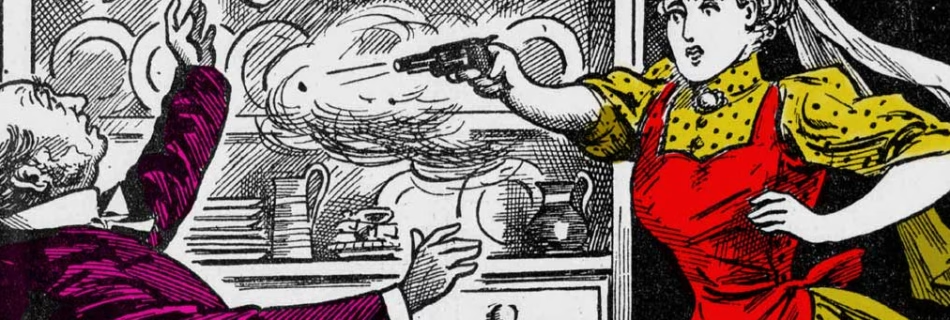The Industrial Revolution mechanized printing and reduced costs, leading to explosive growth in publishing. At the same time, an unprecedented increase in literacy produced millions of new readers and sparked a reading revolution. But what were these new readers to read? One of the century’s most popular genres, sold on the streets of Victorian England, was the penny dreadful. Cheap, entertaining and extraordinarily popular. This is their story.
Read MoreLongform
Meticulously researched, longform, immersive, deep-dives into the history of typography, book history, typographic firsts, and type design.
Who invented the newspaper?
News has been around as long as humans have. From word of mouth to handwritten newsletters to printed newspapers in the early 1600s, the news has always captivated us. It has evolved from an expensive and bespoke service for an elite few into a major part of today’s mass media.
Read MoreMake the Letter Bigger
A brief history of the drop-cap: Decorated or illuminated initials were an important part of medieval manuscripts for a thousand years. From luxurious gold and silver letters to plain drop capitals, they functioned to illustrate, commentate, and adorn the text. Learn their history and purpose, why they eventually went out of fashion, and what replaced them.
Read MoreInventing Posters
The modern poster first appeared in France in the 19th century, but its antecedents can be found in Renaissance printmaking. Woodcut, engraving, etching, and drypoint were techniques used by the likes of Albrecht Dürer, Hieronymus Bosch, and Raphael, while printmaking publishers, like Hieronymus Cock, helped popularize the standalone art print and turn it into a thriving industry.
Read MoreBlack Print
The remarkable story of early African American print culture; its authors, editors, journalists, printers, and publishers. From protest pamphlets to the first Black newspapers, periodicals and books.
Read MoreDeath of a Typeface
Robert Granjon (1513–90) was a French type designer who, in 1557, invented a new style of typeface which later came to be know as Civilité, after the civilité or etiquette books which the typeface often appeared in. Although Granjon wished for his Civilité to become the national typeface of France, it never really caught on, and it never seriously competed with Roman and Italic fonts.
Read MoreGranjon’s Beautiful Bastard
When books began to be printed in the fifteenth century, scribes were not immediately redundant. The rich still commissioned them to produce deluxe manuscripts, governments and local authorities still required secretaries and copyists for administrative documents, and even printed books left spaces for decorated initials and other elements to be […]
Read MoreThe Most Dangerous Book in the World
On a cold morning in early autumn of 1536, in a small town on the outskirts of Brussels, William Tyndale was led from a tiny prison cell, then chained to a stake, strangled and burned. His crime? Daring to challenge the Catholic Church and his insistence on translating the Bible […]
Read MoreRoad-trips & the Invention of Print
We don’t know for sure what prompted Hans Gensfleisch to leave his hometown of Mainz in western Germany for Strasbourg in the south but leave he did, probably in the early 1430s. Founded in the first century BC by the Romans, under emperor Augustus, Mainz had for a time, after […]
Read MorePomp, Type & Circumstance
Within several decades of its invention in Europe, the printed book was already outselling handwritten or manuscript books. A very conservative estimate would be that 12 million books were produced from the publication of Gutenberg and Fust’s first printed Bible in about 1455 until the end of 1500. In those […]
Read More








